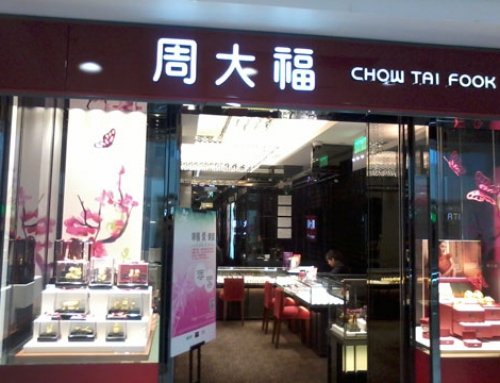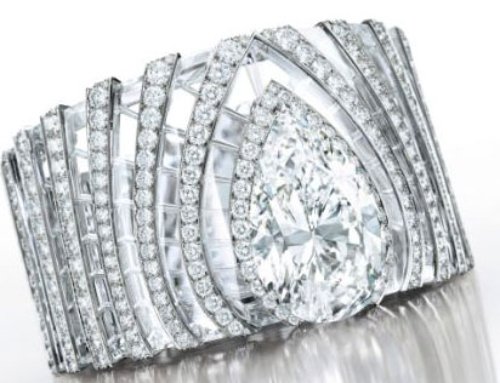Is the year 2018 a pivotal year for the diamond industry? Not better or worse than any other year, it sketches major changes and renewal. With De Beers at its helm – and this is certainly not surprising – the diamond industry takes its fate into its own hands. An interim balance of the year of the many (r)evolutions.
Prices: neither too high nor too low …?
We do not experience a ‘yoyo effect’ of the diamond prices, the stability seems, more or less, to persist. In both rough purchases and polished purchases, trends so far correspond fairly well with seasonal expectations.
During the first half of the year, pricing was sturdy for rough diamonds. In other words, rough remains rather expensive, confirming the concern about the production margins, which are still too low. The narrow gap between rough and polished prices is a recurring – and gradually structural – challenge for the diamond sector.
Since the beginning of the year, both rough and polished prices have risen very gradually: 4.8% for the rough and 5.1% for polished stones, according to the international raw price index Zimnisky. Rough producers continued to dump part of their stocks against the background of an overall slight drop in production (production had experienced strong growth in 2017). Short-term trends, both after the summer holidays and in the medium term, are positive.
This positive balance is supported by a solid global demand for diamonds, which is expected to grow slightly this year. Demand in the United States is stable and growing in India and China. India is becoming more and more forceful as the promising market of the future, which could replace the United States in terms of demand in the jewelry market in general. According to Rapaport, that reports the results of a Euromonitor International survey, “by the end of 2018, India will outpace the United States to become the second jewelry market after China.” Apart from the potential increase in the number of consumers, this demand should affect the type of gemstones and the style of the proposed jewelry. The cheaper and lower quality diamonds seem to be preferred in the United States and China. A trend to keep an eye on.
Large and more high-end jewelry houses are doing well
Swatch Group (Harry Winston, Omega, Longines) announced record results for the first half of 2018, driven by the very strong demand in North America and Asia. The group recently caused a great deal of controversy by withdrawing from Baselword, where the brand was one of the pillars, because it no longer judges this show as sufficiently dynamic, creative, nor adequately in accordance with the current market environment.
Richemont, owner of Cartier and Van Cleef & Arpels, has shown an 11% increase in jewelry sales in the past 5 months.
Kering, owner of, among others, Boucheron and Pomellato, also reported solid sales in the first quarter, thanks to the strengthening of the positioning of its watch and jewelry brands.
Finally, Tiffany, which is engaged in a process of major investments and overall modernization of the brand – in accordance with the innovation required by the times – has also entered a very positive dynamic. The interest of the customers for this brand – especially women – will certainly not negate this strategy! A jeweler who resolutely focuses on the future (long live the personalization of jewelry) and who both strongly attracts the eyeballs and attention of consumers…
Synthetic diamonds are part of the landscape
What a year for synthetic diamonds! They are here to stay. Their quality continues to grow steadily. Even though fraud persists, there is less talk about it.
The detection devices are numerous on the market, in constant progression and at prices that are accessible to everyone. They obviously do not all have the same specificity. It is no longer conceivable to have none of these devices.
Another new fundamental factor in synthetic stones: the new terminology adopted by the US Federal Trade Commission as communicated during the summer. As a result of it, the word ‘synthetic‘ has been removed from the list of terms that it endorses in the revised jewelry guides. It does not forbid it, but recommends using the term ‘grown‘. They also removed the word ‘natural‘ from the definition of diamonds. Changes that the manufacturers of synthetic diamonds will probably like.
You might recall that in January 2018 the Antwerp World Diamond Center (AWDC), the Diamond Producers Association (DPA), the Gem & Jewelry Export Promotion Council (GJEPC), the Israel Diamond Industry (IDI), the International Diamond Manufacturers Association ( IDMA), the US Jewelry Council (USJC), the World Diamond Council (WDC) and the World Federation of Diamond Scholarships (WFDB), all came out in favor of continuing to use the denomination ‘synthetic‘.
But the most groundbreaking news in the field of synthetic diamonds, announced with a remarkable timing – just before the Las Vegas show – is the launch of a line of synthetic diamonds by De Beers: Lightbox. The surprise was total, but the reaction from the diamond industry was fairly positive. This ‘high fashion jewelry‘ is expected to be rolled out in the United States this month. They do not strive to compete with natural diamonds, even if some concerns remain, but to take control of the synthetic diamond market … and certainly of its pricing. Will De Beers’ attempt be successful? Nobody knows, but the game is worth playing. The commitment and success of this project are of strategic importance to the company.
Could Lightbox damage the sale of natural diamonds? Yes, if it takes up too much market share and substitutes the purchase amount originally foreseen for natural diamonds (= for large occasions according to studies carried out by the brand). Or by lowering the price of natural diamonds from a ‘similar‘ range: small goods and colored diamonds. The purchase of a Lightbox synthetic diamond would be between 75% and 85% lower compared to the price of a similar natural diamond.
Finally, it should be noted that Signet Jewelers wants to sell synthetic diamonds if the market turns out to be sufficiently large!
Ethics and traceability are slowly but surely evolving
Since we are talking about Signet, we must point out that the American group also participates in the pilot project of De Beers Blockchain Tracr, presented in France on 11 April 2018. As a reminder, it’s about “strengthening confidence in the diamond ecosystem, creating an immutable and fraud-resistant registration of the path of a stone along the entire value chain and guaranteeing its origin,” says Tom Montgomery, Senior Vice President, Strategic Initiatives. The project is still in the design phase and is not the only one on the market. But given the importance of De Beers in the industry and its ability to innovate, given the need to introduce a tool that can guarantee the traceability of diamonds … we are eagerly awaiting more news about this.
In the area of ethics, De Beers continues to tackle the traditional mining industry and presented its GemFair program in mid-April, designed in collaboration with the DDI, the Diamond Development Initiative. GemFair strives for “a safe and transparent way to bring small-scale mining (ASM) diamonds of ethical origin to the market“. Knowing that ASM covers about 20% of the quality diamonds in the world and that management and marketing is one of the biggest ethical issues in the industry, the initiative is certainly quite attractive.
Milestones for the future: marketing in the spotlight
Marketing is the key to demand generation. All the efforts and innovations mentioned above require marketing, so that consumers see the value of it. And the industry needs marketing, so consumers want to buy diamonds … that’s for sure. The initiatives so far in 2018?
We can focus on Tiffany and its new collections or De Beers and its perfect communication (mainly intended for the industry). But it is ultimately ALROSA that comes ahead of the pack: the Russian miner has used the World Cup to advertise its diamonds, as part of an international marketing campaign. ALROSA intends to sell its stones under a certified brand of Russian origin, which assures the consumer of the origin of these stones.
Finally, 2018 is a year under good auspices, even if market trends have nothing revolutionary. The last quarter of 2018, with the arrival of the holiday season, looks bright.
Some initiatives have contributed to the industry heading towards a new course and finally turning its eyes towards the future. This will not leave the diamond industry unmoved. Blockchain, Lightbox, Gemfair… it is always De Beers that leads the dance and sets the tempo. These projects, all innovative, trendy and at the forefront, announced in the interval of a few weeks, open the way to important trends that have yet to come.
“The future belongs to those who prepare for it today.”
Sylvain Goldberg






